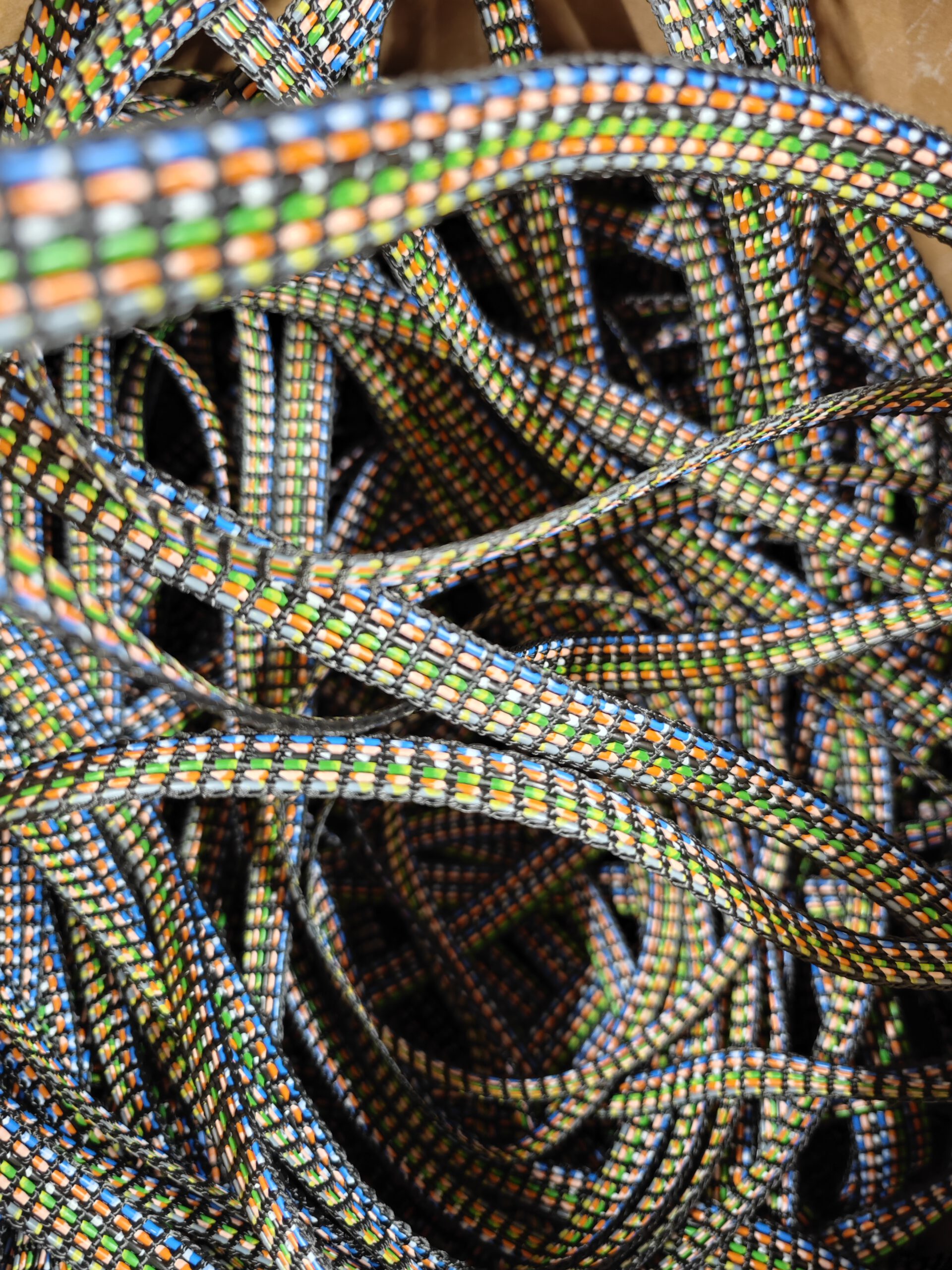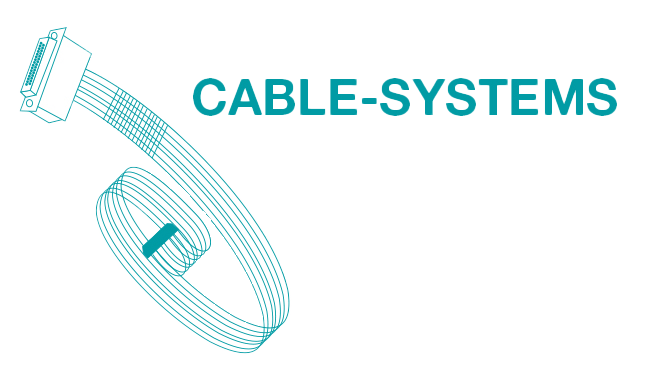Design, layout, properties and production
The principle for manufacturing fabric tape cables is based on textile tape weaving technology.
Design
Properties
Manufacturing
Design and layout
The principle for manufacturing fabric tape cables is based on textile tape weaving technology, whereby the cables are guided as longitudinally drawn warp material. The use of modern weaving machines with NC control ensures exact length definition. This technique can also be used to cut out individual or all cables from the fabric composite at precisely defined dimensions.
Can be configured for specific applications, combination of cables with different diameters in one strip:
Single wires
multi-core cables
twisted wires
Fiber optic cable
Hoses
HF strands
Ropes

Fixed, geometric layout
All cables are organized in a fixed layout over the entire length of the belt, so that an arbitrary
composition is always ruled out.
The spacing between the lines can be varied by weaving in warp threads.
Partial lifting of the fabric bond is quick and easy.
Line inlets and outlets can be pre-programmed with dimensional accuracy depending on the shot density.
Due to the geometrically defined layout, there is a high degree of reproducibility of identical parts with identical shapes.
Product features
Physical stress
The physical load on the woven conductive bands is absorbed by the fabric composite.
The cables are therefore virtually free of physical stress.
Backing weave, a textile intermediate fabric, provides additional force transmission and strain relief for the belt and also serves as a belt closure.
Thermal load
Since there is no material connection between neighboring conductors and no conductors are enclosed by other conductors as in dense cable bundles, ideal heat dissipation is guaranteed. heat dissipation is guaranteed.
This enables the transmission of high currents or the reductioncross-sections with the same amperages is possible.
Electrical properties
Thanks to the geometrically organized layout and the precise precise distances between the individual cables electrical properties can be clearly defined and influenced.
Conductors can be physically grouped and separated from each other.
By integrating earth conductors between individual signal conductors and a corresponding distance between them, different impedances can be defined.
Avoidance of line cross-talk.
Bending fatigue strength
Adjacent cables can move freely against each other in the fabriceach other, as there is no material connection between the between the lines.
The fabric composite enables elastically movable and self-supporting self-supporting and supporting conductive band structures can be produced.
Deformability over several axes is unproblematic.
The use of twisted weaving yarns means that abrasion abrasion can be virtually eliminated even with very can be virtually eliminated.

Information on production
Whether cables, hoses, wire ropes, fiber optic cables, copper strands or a combination of these, we manufacture woven tapes according to exact customer specifications. Media carriers, even with different diameters, are placed parallel to each other and woven into flat tapes on modern weaving machines. The fabric composite creates elastically movable and self-supporting cable tape structures.
Manufactured by CABLE-SYSTEMS according to strict quality standards and in-process controls. Our quality management system is certified in accordance with the DIN EN ISO 9001 quality standard.
Produceable bandwidths
The width of the fabric tapes depends on the diameter of the cables to be woven. In principle, a maximum cable width of 220 mm per tape is possible.
Cables with a diameter of 1 mm to 8 mm are mainly produced using NC weaving technology. The maximum width per belt here is 130 mm.
Cables from a diameter of 9 mm are manufactured using conventional weaving technology. The number of cables and the width of the woven tapes also depends on the cable diameter.
It is possible to weave cables of different diameters into one belt in terms of production technology.
The fabric bond is sealed using shrink tubing, thermal sealing or adhesive tape.
Weaving material
The width of the fabric tapes depends on the diameter of the cables to be woven. In principle, a maximum cable width of 220 mm per tape is possible.
The choice of weaving material depends on the application conditions for the woven cable tape. Yarns and twisted yarns made of polyester (PET), polyamide (PA), Teflon (PTFE), aramid, carbon fiber, glass fiber or PEEK are used in different weights and strengths.
